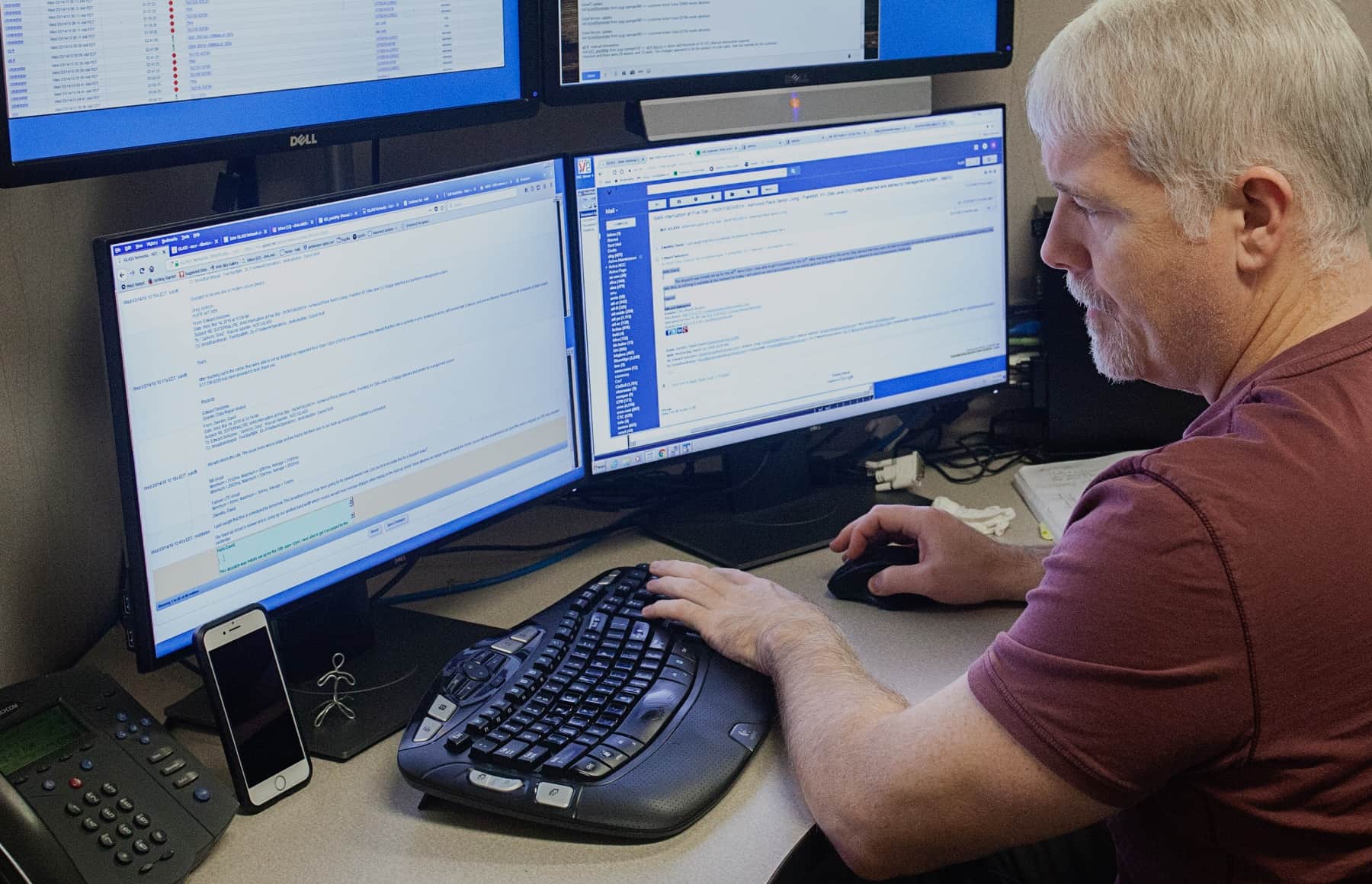In order to weigh the importance of 24×7 network monitoring, it’s worthwhile to step back and understand why monitoring is critically necessary in the first place. Monitoring looks at three key aspects of your network’s operation:
- First, it looks at faults that may be occurring. Are devices on the network throwing errors or warning messages? Is a storage device nearing its capacity? Is a server’s CPU utilization regularly exceeding 95 percent?
- Second, it looks at the network’s overall capacity. Is there more traffic than the network can handle efficiently? Is packet loss on certain segments the result of more data being transmitted than the path can handle? If so, what’s the source of that excessive data stream?
- Third, monitoring looks at overall performance (health). Are all network devices up and running? Are some signaling they’re about to fail? Are key applications healthy and running as they should?
Knowing the status of these three parameters allows you to anticipate problems that can affect your user base before they manifest. However, if you’re only checking your monitoring system periodically, or only when a problem arises, that simply is not enough. Your network monitoring system must provide fault, capacity, and performance data continuously. It requires around the clock monitoring if you intend to prevent outages and other unpredictable issues. In short, 24×7 monitoring keeps you prepared and in control.
Why Every Company Should Be Monitoring their Network Around the Clock
You’ll Minimize Downtime
Unscheduled downtime is the number one cause of lost revenue. According to a Ponemon Institute study, the cost of one minute of downtime reached as high as $17,244 in 2016, assuming a 40-employee company. IBM, IDC, Gartner and others have each offered their estimates, but no matter which you accept, it’s clear that downtime is expensive —both from the standpoint of lost sales opportunities, but also due to the cost of idle time among your employees who are unable to do their work.
The best way to avoid unexpected downtime is to prevent it from happening in the first place. Outages don’t stick to a 9-to-5 schedule. Simply checking your monitoring software when you get to the office each day isn’t enough. An anomaly that occurred last night might well have taken your network or some segments of it out of service.
24×7 network monitoring automatically detects potential problems and sends alerts so that your NOC can take action. You may not have the staff to cover all 24 hours each day, and that’s where outsourcing to a professional NOC gives you an SLA-guaranteed network operation.
24×7 Network Monitoring is an Early Warning System
First, take note that not every alert means a node or a segment is out of service. Oftentimes, an alert signals a symptom that points to a larger problem. For instance, if the hard drive on an email server is signaling that it’s nearing its capacity, that alert gives you the information you need to upgrade the hard drive before it fails, brings down the company’s entire email system, and creates a major disruption to employees, customers, vendors, and other stakeholders.
Potential issues or performance bottlenecks are revealed as soon as they occur. You get an early warning when network engineers monitor your network continuously, as well as the potential for the NOC engineers to solve the problem before it does damage . Simply put: With 24×7 monitoring, your network maintains peak performance even while your team is at home and asleep.
Greater Efficiency Levels
Receiving alerts as they’re issued allows a network engineer to act immediately and prevent disruption to your work force so they can maintain their high levels of productivity and customer service.
Every network occasionally needs to be taken out of service so that updates and patches can be installed. Continuous monitoring allows you to plan for such scheduled downtime, thus avoiding unnecessary disruption during peak hours.
Scale with Demand
Your business has likely grown in the past year, and you’ll want it to grow more over the next year—whether the cause is seasonality or simply the solid, organic growth every business strives for. Continuous monitoring shows you where demands on the network spike, giving you the data you need to make sure your infrastructure can keep pace with that growth.
Perhaps best of all, outsourcing your network monitoring gives you the intelligence you need to scale your network almost without limit, and without adding more employees.
Outsourcing your 24×7 network monitoring means you get all of these added benefits without the time and expense of having to research and select the best network monitoring software, then installing and maintaining it yourself. And yes, without the cost of having to hire new employees.
Contact iGLASS to see how we can help you improve visibility into the health of your infrastructure around the clock.











